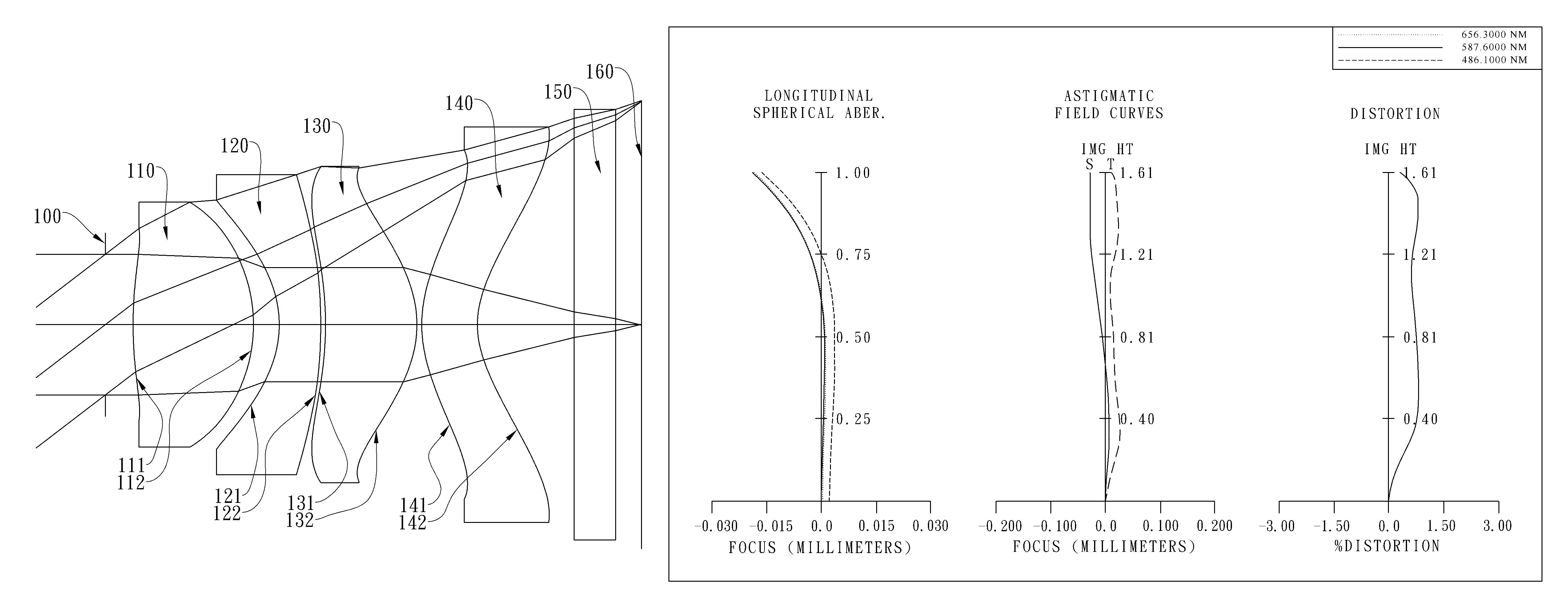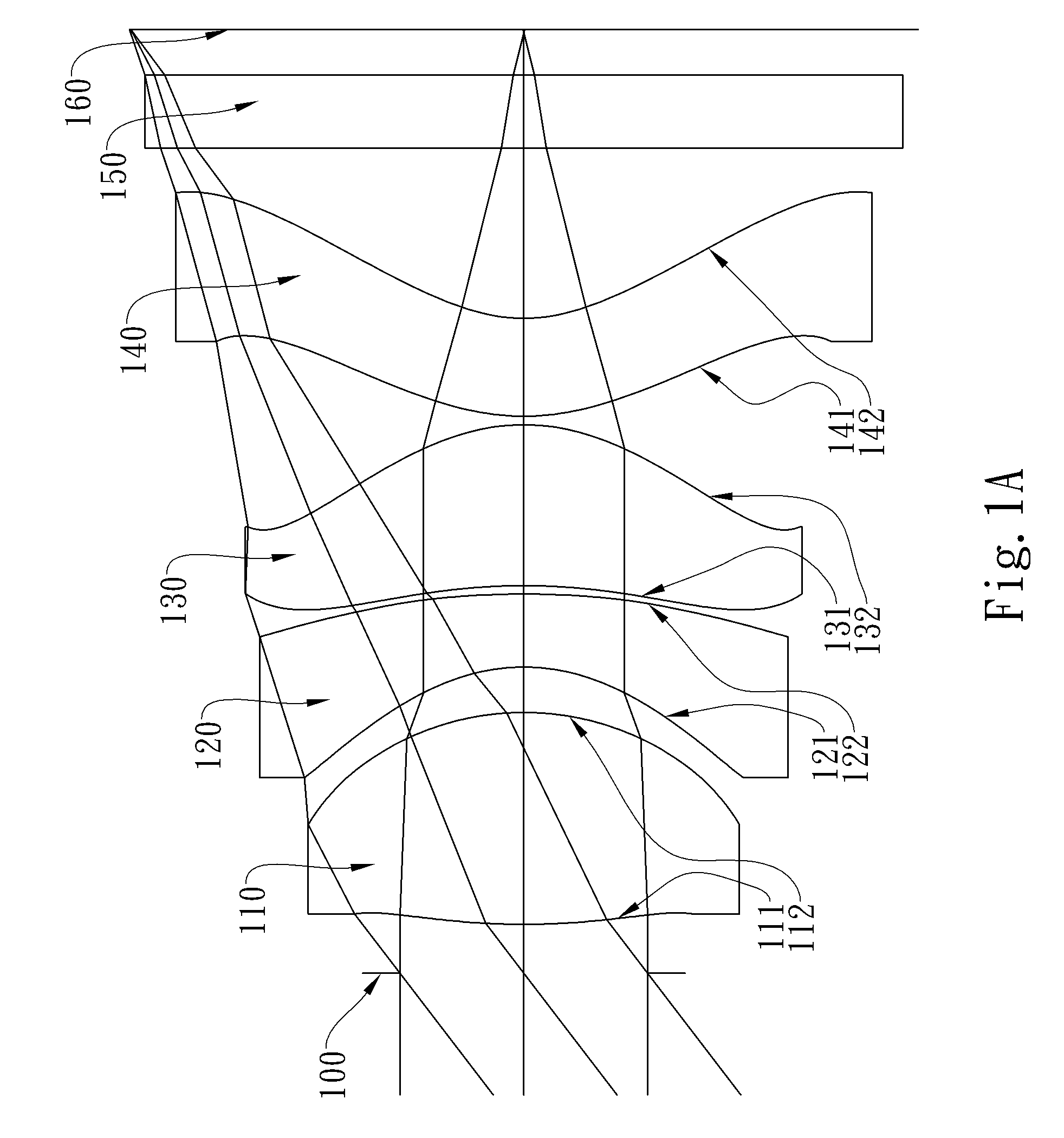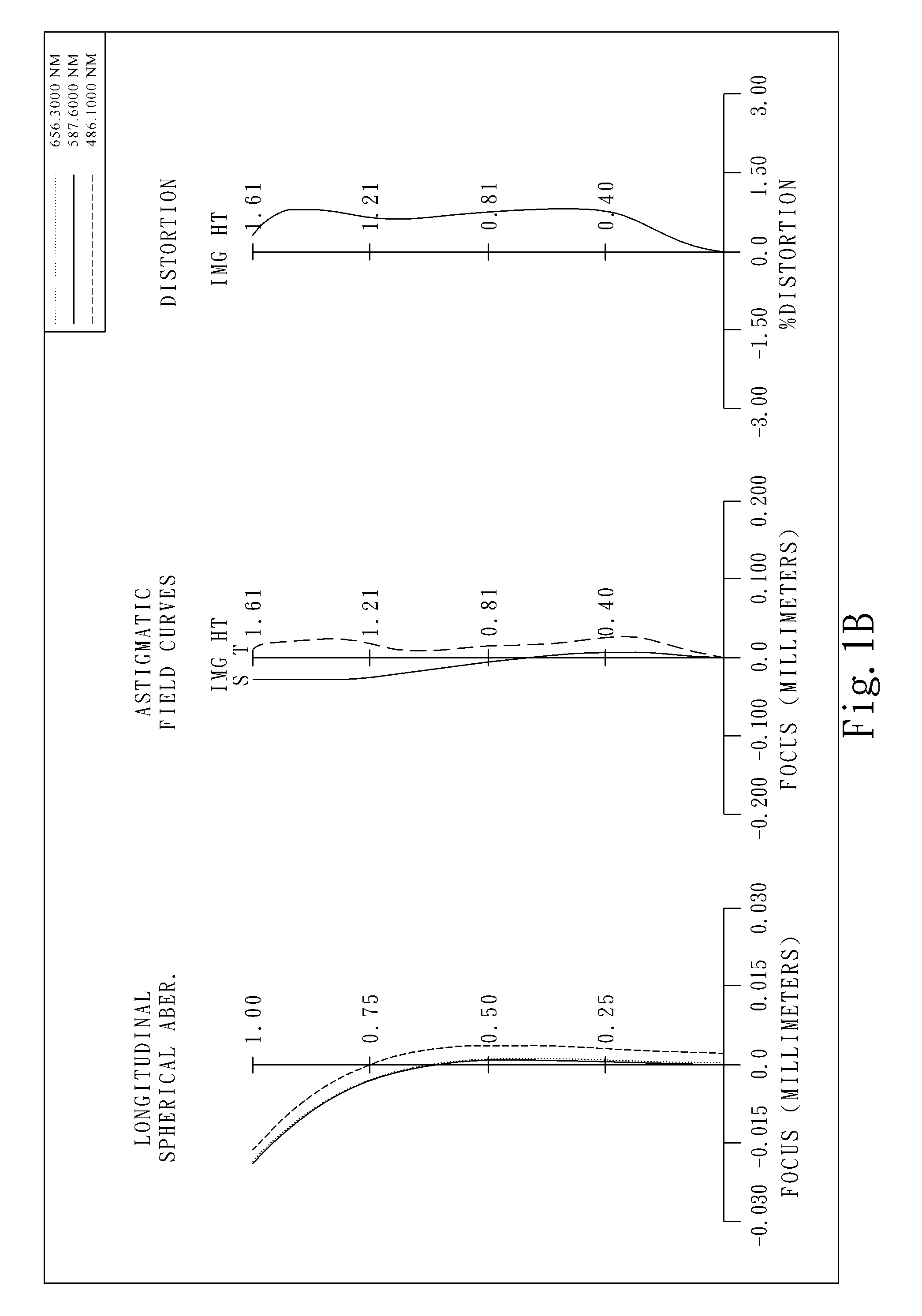Image pick-up optical lens assembly
a technology of optical lens and assembly, applied in the field of can solve the problems of insufficient three-element lens assembly for high-end imaging lens modules, the standard for image quality becomes even higher, and the pixel size of sensors will become even smaller, so as to facilitate a significant reduction in the size and sensitivity of the lens assembly, and the effect of reducing the total track length of the image pick-up optical lens assembly
- Summary
- Abstract
- Description
- Claims
- Application Information
AI Technical Summary
Benefits of technology
Problems solved by technology
Method used
Image
Examples
first embodiment
[0049]In present image pick-up optical lens assembly, the effective radius of the object-side surface of the first lens element is Y11, and the effective radius of the image-side surface of the fourth lens element is Y42. The distances and relative locations represented by Y11 and Y42 will be further illustrated in FIG. 11. FIG. 11 is a schematic representation illustrating an image pick-up optical lens assembly in accordance with the present invention. The vertical distance between the farthest point of the effective light entry area on the object-side surface 111 of the first lens element 110 and the optical axis is Y11, and the vertical distance between the farthest point of the effective light entry area on the image-side surface 142 of the fourth lens element 140 and the optical axis is Y42.
[0050]Preferred embodiments of the present invention will be described in the following paragraphs by referring to the accompanying drawings.
[0051]FIG. 1A shows an image pick-up optical lens...
second embodiment
[0080]In the present image pick-up optical lens assembly, the focal length of the image pick-up optical lens assembly is f, and it satisfies the relation: f=2.12 (mm).
[0081]In the second embodiment of the present image pick-up optical lens assembly, the f-number of the image pick-up optical lens assembly is Fno, and it satisfies the relation: Fno=2.07.
[0082]In the second embodiment of the present image pick-up optical lens assembly, half of the maximal field of view of the image pick-up optical lens assembly is HFOV, and it satisfies the relation: HFOV=36.9 (degrees).
[0083]In the second embodiment of the present image pick-up optical lens assembly, the Abbe number of the first lens element 210 is V1, the Abbe number of the second lens element 220 is V2, and they satisfy the relation: V1−V2=35.1.
[0084]In the second embodiment of the present image pick-up optical lens assembly, the refractive index of the first lens element 210 is N1, the refractive index of the second lens element 22...
third embodiment
[0101]In the present image pick-up optical lens assembly, the focal length of the image pick-up optical lens assembly is f, and it satisfies the relation: f=2.13 (mm).
[0102]In the third embodiment of the present image pick-up optical lens assembly, the f-number of the image pick-up optical lens assembly is Fno, and it satisfies the relation: Fno=2.40.
[0103]In the third embodiment of the present image pick-up optical lens assembly, half of the maximal field of view of the image pick-up optical lens assembly is HFOV, and it satisfies the relation: HFOV=37.3 (degrees).
[0104]In the third embodiment of the present image pick-up optical lens assembly, the Abbe number of the first lens element 310 is V1, the Abbe number of the second lens element 320 is V2, and they satisfy the relation: V1−V2=32.5.
[0105]In the third embodiment of the present image pick-up optical lens assembly, the refractive index of the first lens element 310 is N1, the refractive index of the second lens element 320 is...
PUM
 Login to View More
Login to View More Abstract
Description
Claims
Application Information
 Login to View More
Login to View More - R&D
- Intellectual Property
- Life Sciences
- Materials
- Tech Scout
- Unparalleled Data Quality
- Higher Quality Content
- 60% Fewer Hallucinations
Browse by: Latest US Patents, China's latest patents, Technical Efficacy Thesaurus, Application Domain, Technology Topic, Popular Technical Reports.
© 2025 PatSnap. All rights reserved.Legal|Privacy policy|Modern Slavery Act Transparency Statement|Sitemap|About US| Contact US: help@patsnap.com



